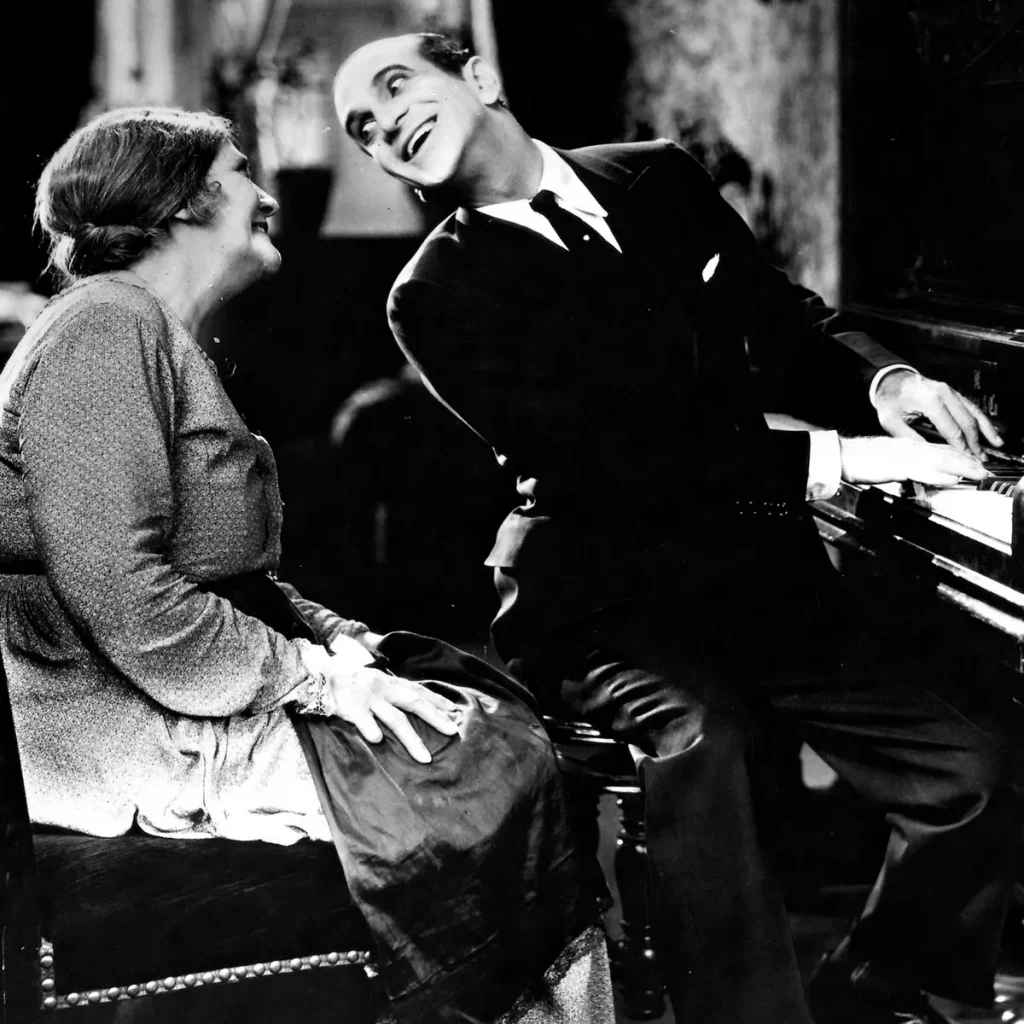If you ask people what the first talkie was you will get some funny answers. “Some Like It Hot”… “The Wizard Of Oz”, “The Jazz Singer”.
The latter film, from 1927, is generally considered to be the correct answer. It isn’t really, as we will see.
Well, OK, it depends what you mean by ‘talkie’. I am expecting a film with people talking throughout, something of feature length (ie not a short) and possibly a recorded musical score, though that is not essential.
This Al Jolson film does indeed have some speech, but it’s not all the way through, and mostly there are the usual intertitle cards explaining what is happening or what characters are saying. Yes, there is a recorded musical score and there are portions where Jolson sings live and talks, but they can’t add up to more than two or maybe three minutes in the whole film. The rest is really what you would call a silent film, well, silent with synchronised sound.
Jolson’s first words are “Wait a minute, wait a minute, you ain’t heard nothin’ yet”, except Jolson had made other short films with sound and had said this before. What stunned people watching was the free and improvised nature of what he said.

You can buy this film on home media. It’s worth watching. I find it rather squirm-worthy, not just by modern standards but by any standards. I like Jolson generally, and he was a great performer, and the film was a massive hit.
But let’s be clear, Warner Brothers themselves had produced feature films with complete synchronised scores long before this, and they produced the first all talkie film, “Lights Of New York” in 1928. Short sound films had been around since 1900, though 1923 or so is the first real record of sound films publicly demonstrated.
Nevertheless, as shown in “Singin’ In The Rain”, “The Jazz Singer” marked the point at which talkies became a thing. It has been re-made since, many times.
Some directors and producers embraced it, despite the difficulties. Others resisted. As the interviewees on “Hollywood” say, the silent film was an international language. It didn’t matter what you spoke, you could understand a silent film. The whole method of story telling changed. Talking was the thing.
One person who resisted was Charlie Chaplin.
